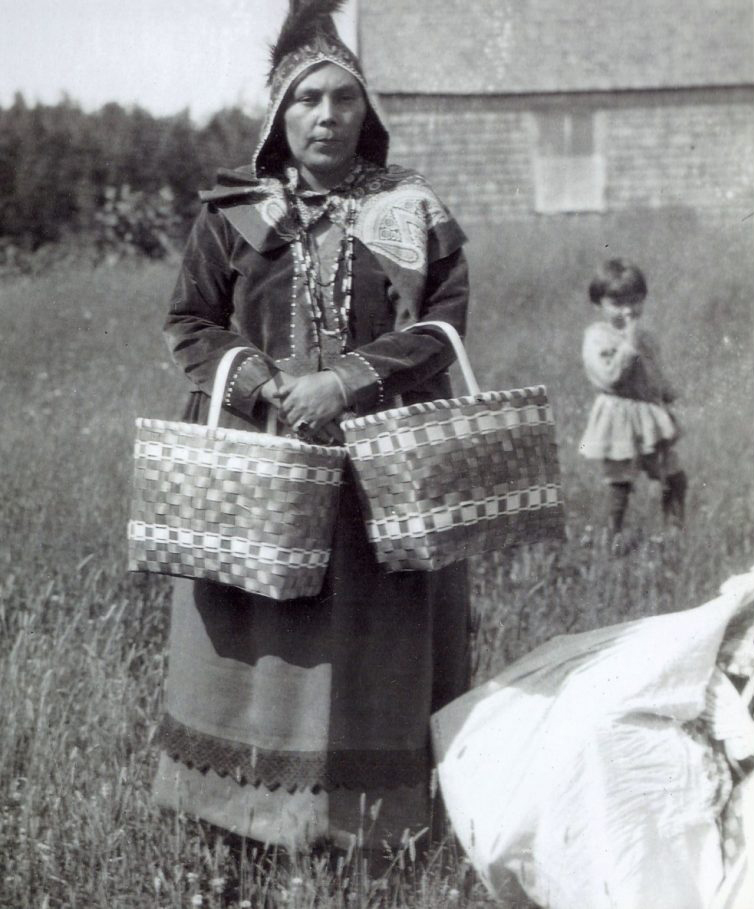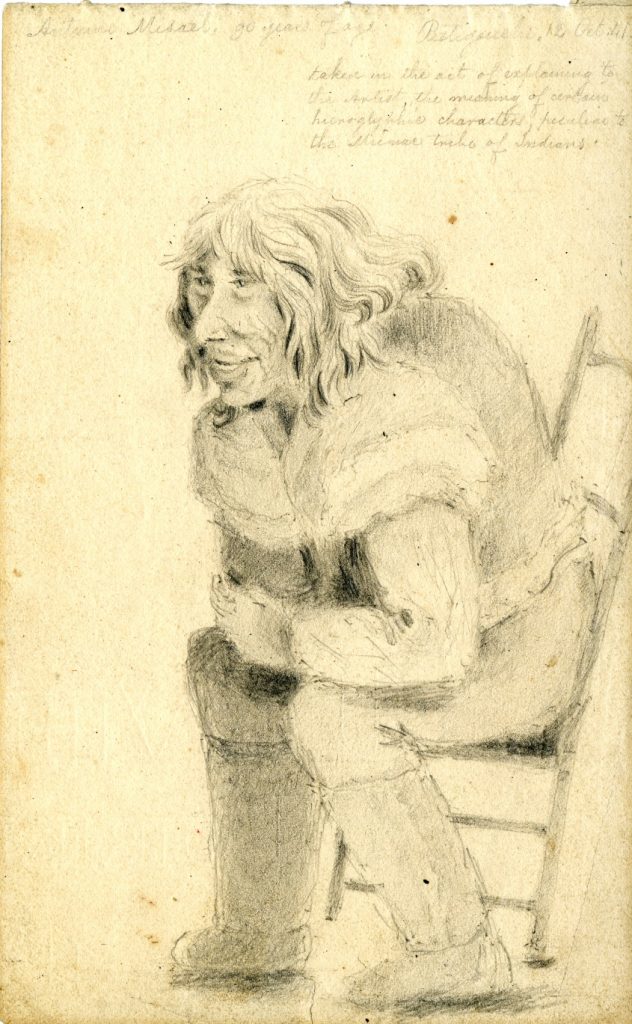Student Learning
I will:
- Understand that not everyone in Canada has the same stories of origin for people, animals, constellations, plants, and nature (Activity 2 and 3)
- Demonstrate an awareness of the link between positive self-identity and making healthy decisions that affect relationships (Activity 2 and 3)
- Value diverse cultures and experiences (Activity 2 and 3)
- Take risks and pursue new ideas by designing and making shadow puppets and with them tell a story about exploration showing both positive and negative consequences (Activity 3)
- Make a map overlay showing Waponahkik (Wabanaki) original territory and how it was divided when countries and provinces were created by Europeans (Activity 1)
- Learn some words and phrases in Wolastoqey Lutawewakon and Mi’kmaw (Activity 1 and 2)
“These old firs, these ancient spruce-trees, full of knots from the top to the root, whose bark is falling off with age, and who yet preserve their gum and powers of life, do not amiss resemble me. I am no longer what I was; all my skin is wrinkled and furrowed, my bones are almost everywhere starting through it. As to my outward form, I may well be reckoned amongst the things, fit for nothing but to be totally neglected and thrown aside; but I have still within me wherewithal to attract the attentions of those who know me.”
Mi’kmaw woman speaking at a feast in Cape Breton, 1758

This lesson is intended to show how the Mi’kmaq, Wolastoqewiyik, and Passamaquoddy passed on information to their families and community and to show how they brought these principles to treaty-making.
Over the centuries, as people travelled throughout the territory now known as the Maritime Provinces on both waterways and on land, they learned locations well. What happened on these trips was passed down by word of mouth and taught through dance and song and remembered in dreams. It was the belief that when the story of a past person or place was told, the subject of that story becomes alive once more.

When Europeans first arrived in North America, well over 300 different languages were spoken by the people who lived here. Like languages elsewhere in the world, North American Indigenous languages can be grouped into families which share various characteristics. Wolastoqewiyik [Lutawewakon], Mi’kmaq and Passamaquoddy were members of a large family of languages referred to as Algonquian.
Linguists hypothesize that all Algonquian languages share a common ancestor called “Proto Algonquian,” which probably dates to 4,000 years before the present day. Dialects developed within this large group and isolation may have caused these dialects to eventually become separate languages.
Beginning about 2,000 years ago, the isolation of the Eastern Algonquian languages led to the development of the languages of the Waponahkey (Wabanaki Nations) of today. In New Brunswick, these languages include Passamaquoddy, Wolastoqey and Mi’kmaw. Passamaquoddy and Wolastoqey are very closely related, and many linguists consider them dialects of the same language and refer to them as Wolastoqey–Passamaquoddy. They have been compared to British and American English, differing slightly in vocabulary, pronunciation and accent, but easily mutually understood. Mi’kmaw is more distant. In the table that follows the legend there is a glossary. Try teaching some of the words highlighted in the text to your class.
When Europeans first arrived in the New World, none of the Waponahkey (Wabanaki) languages were written. People who do not rely on written records develop ways of keeping their oral traditions accurately. Special occasions during the year would require the retelling of specific stories or recitations of historic events. In the old days, family trees were recited at Mi’kmaw and Wolastoqey funerals and weddings. Ritual phrases developed to help people remember.
Stories are an important part of this oral tradition. Mi’kmaw stories frequently begin with the ritual phrase, “The Old People are encamped […]” Many stories are now written down, but storytelling is inherently different from reading. It requires an interaction between the teller and the listeners, while reading is an essentially solitary activity. Some contemporary Native American storytellers deliberately will not write down certain parts of their stories, believing that to do so will lessen the value of the oral tradition.
Many stories were told at certain times, perhaps only in the winter or only at night. The Klu’skap/Keluwoskap stories were meant to be told only after the first frost of autumn and before the last frost of spring. Other stories, drawn from personal experience and frequently funny, were told at any time of the year. Many of the traditional stories are considered sacred but are frequently also humorous.
Stories are more than just stories. They explain the world around us — how Turtle got his hard shell, or how the seasons came to be. Most importantly, they teach people the values of their culture and how to behave well within that culture. And finally, stories are for entertainment. There is a Cree saying: “The good story is the one that lets you live in winter.”
Waponahkey stories may seem strange to English speakers. Part of this is undoubtedly due to language — much subtlety and nuance is lost in translation. But the structure of these stories is also different from European story structures. Many are long cycles of stories without an obvious beginning, middle or end. Episodes may be moved around between or within stories, depending on the point the storyteller wants to emphasize. Characters in Waponahkey stories frequently change shapes, and the shape of the stories themselves changes with each telling. The same story may be told differently on different occasions, changed to suit the circumstances and the audience. And characters in these stories are rarely “good” or “bad” in the European sense. In the space of a story, the same character may be both foolish and wise.
Many Native American story traditions involve a character known as the trickster, who is usually both sacred and foolish. Tricksters are frequently shape-shifters and are often involved in shaping the earth and its inhabitants. In the Waponahkey stories, the trickster is sometimes Klu’skap/Keluwoskap, but more often it is his brother Paqtɨsm/wolf or Apli’kmuj/hare/Mahtoqehs. In some stories Apli’kmuj/hare/Mahtoqehs is the trickster, deceiving Bear or Wildcat or Wolf and leaving them looking foolish. In other stories, he is the foolish one, losing his tail by trying to use it to fish through the ice, and so explaining why hares have such short tails! By virtue of their dual nature, tricksters both teach people how to behave and allow them the opportunity to behave badly and break cultural taboos.
The most well-known Waponahkey stories are those involving Klu’skap/Keluwoskap. These are sacred stories, but they are not sombre or solemn, and while they are told to children, they are not specifically children’s stories. Klu’skap/Keluwoskap has magical powers and has helped to make the world a good place for people to live, for instance by making the animals the right size, ensuring a supply of fresh water, and regulating the winds and the seasons. But Klu’skap/Keluwoskap also makes mistakes, and he learns the right way to do things from the animal world and from his elders in the form of Grandmother.
The Klu’skap/Keluwoskap stories, especially, deal with people’s relationship to nature and their place in the world. Stories are a vital part of the oral tradition, a repository of knowledge and traditional language, and a guide to how to live life. Stephen Augustine from Elsipogtog (L’sipuktuk) says: “the Creation Story has more depth than a simple tale about our origins; since time immemorial it has been the vessel of our clan’s history, our system of values, our modes of governance and our relationships with each other.” As Abenaki storyteller Joseph Bruchac says, “Our stories remember when people forget.”

What could these women be doing?




